
Given the season and ongoing LPs elsewhere, it's time to link to this post on my old Tumblr regarding the Silent Hill 3 Hard mode puzzles and how alleged staff miscommunications led to them being functionally broken. Not difficult; nonfunctional. Configurations for keypads were changed around between design and production without the writers being notified; crucial lines instructing players to reorder numbers for codes were omitted. The resultant mismatch between clues and answers for one bird-based puzzle in particular led to Silent Hill fans quizzically debating a number of ornithological quandaries, including...well, the famous query above.
You'd think this would be a big scandal (relatively speaking; within the video game horror fandom), but everyone turns a blind eye; it's one of those situations - like Ghaleon's motivations in TSS or the fact that Silent Hill 4 was, in fact, planned as part the series all along instead of being retrofitted as an SH game - where conventional wisdom just actively resists the correct information being injected into the mainstream. While she did a great job making Heather's dialogue sound memorably natural, I've always found the translator's attitude in the linked posts irresponsible; she's weirdly proud that the puzzles don't work, because that makes them harder! (Yeah, it wasn't strictly her job, but you do need to notify somebody when you see part of the game on which you're working break down like that.)
While I'm linking old Silent Hill 3 Tumblr stuff, I always found this animated poster just fucking awesome.
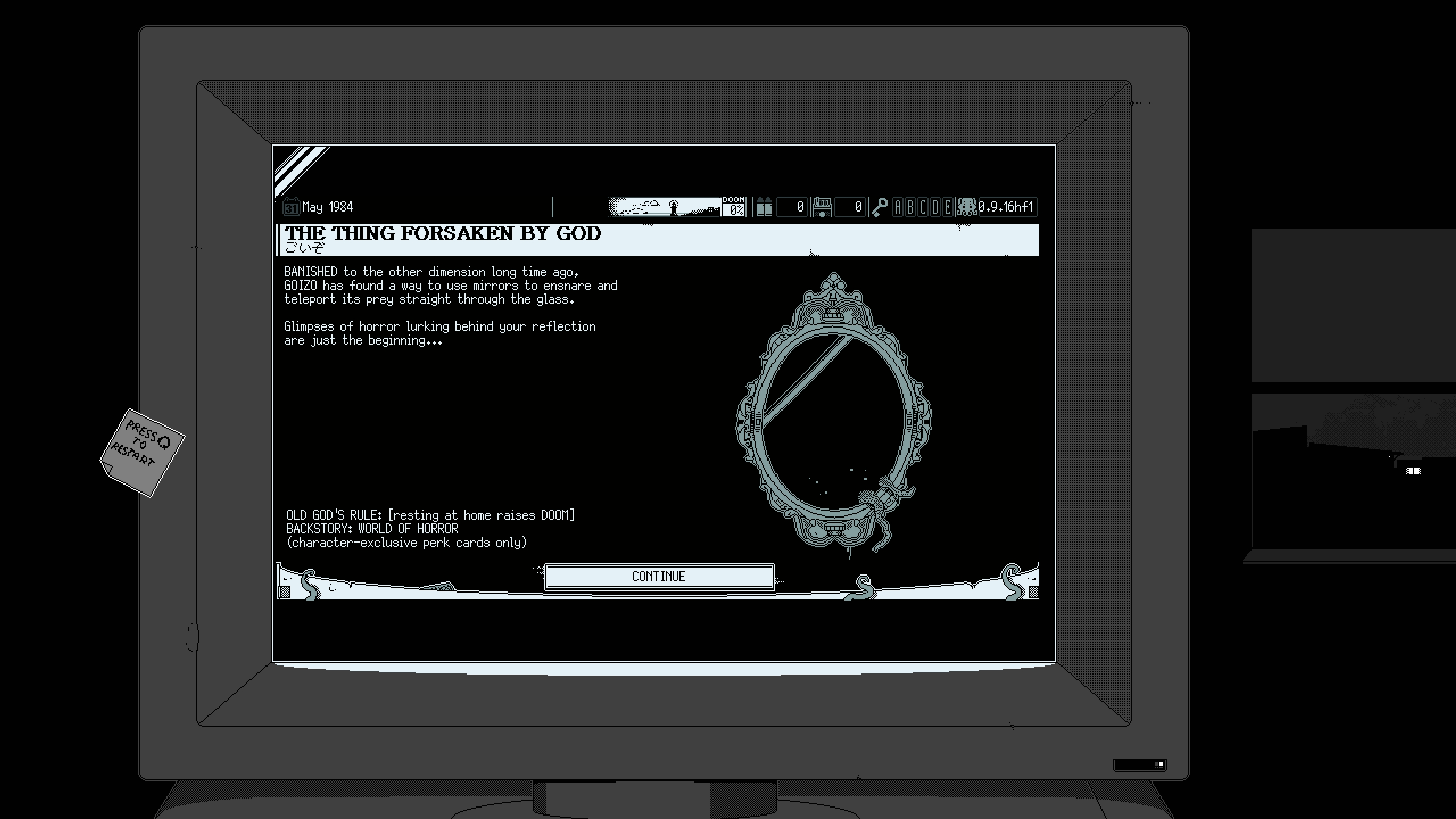
1. GOIZO: Goizo is Japan's sweetheart. Everyone loves Goizo - probably because its name is "Goizo." (To quote someone from one of the many World of Horror streams I've watched: "IT'S YOUR BOIZO GOIZO".) Also probably because Goizo is made of tentacles. Let's be practical here. (I should have not been surprised that Goizo comes from a video nasty titled Gazoo ("gah-zoh"), which I am told, but do not believe for a second, is just gory and not pornographic.)
In further awesomeness, Goizo is a "Mirror Horror," which means it lives behind the glass, a fertile breeding ground for horror. Its epithet (also taken from the video nasty) is the badass "Thing Forsaken by God." Its unique doom ending involves it emerging from the eyes of your character's love interest after they glimpse their reflection in their love's pupils. There's not a step wrong with Goizo. It's a better apocalypse than we deserve.
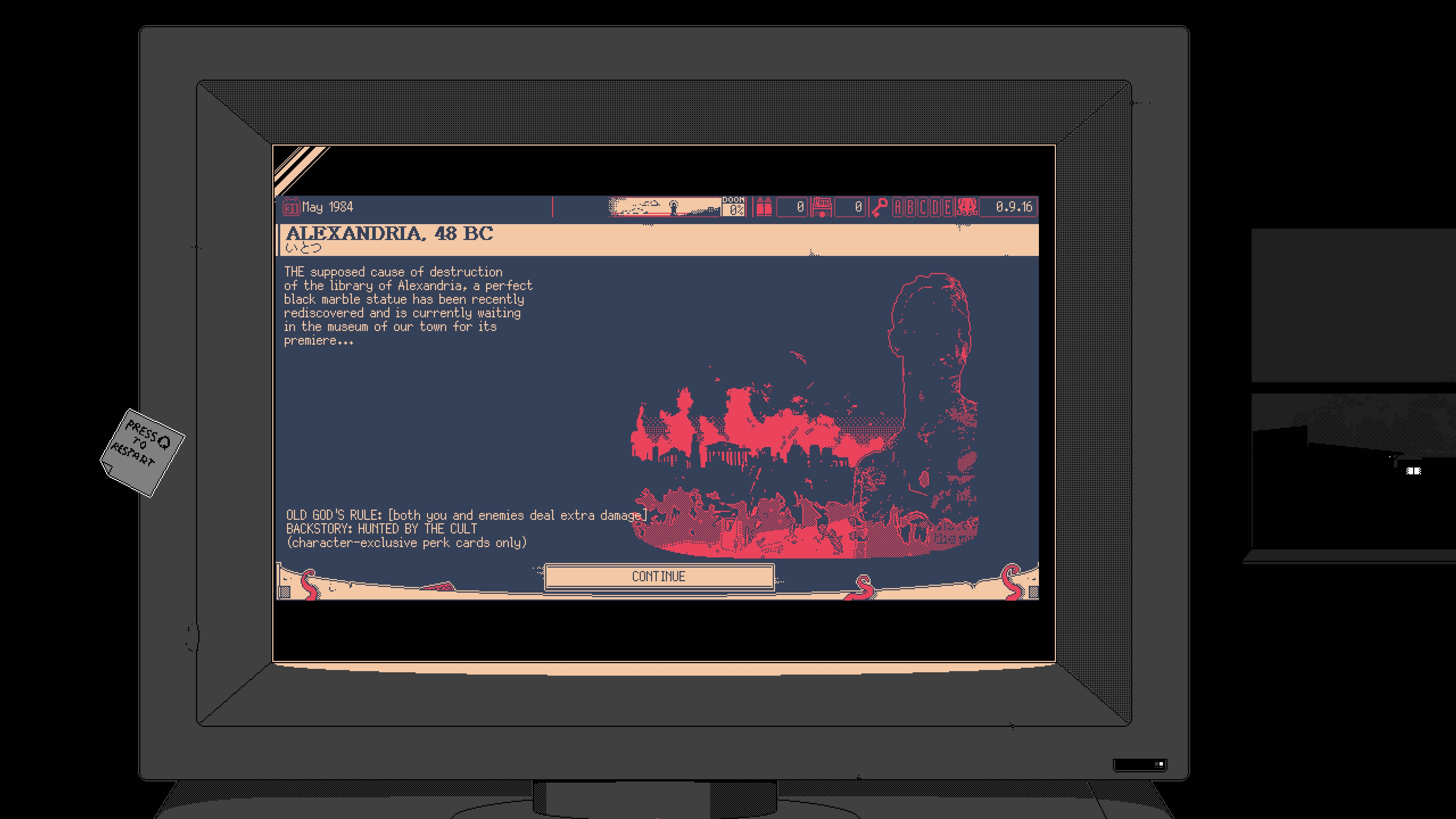
2. ITHOTU: Ithotu could easily take top of the heap if Goizo weren't firmly positioned there. It's introduced as the culprit behind the burning of the Library of Alexandria, which is a hell of a rap sheet. (Granted, it's a limited one so far as eldritch apocalypses go, but it has a specificity and fallout that gives it an edge over wider but vaguer crimes.) A being of living fire called "the Devouring Flame," it houses itself within a jet-black marble statue of a Greek god - a good look. There's an elegance to its menace. Its followers have gotten Ithotu an unveiling at the local museum, and it unleashes Armageddon at its premiere (which, again: class); your character's cause of death is "perished in the hecatomb," which is a heck of a name for a metal band. Also, its followers' trademark spell, "Ithotu Flame," could, with enough effort (and before the dev caught on), fell the Something Truly Evil superboss, a feat that isn't normally possible. Ithotu's just going the extra mile all around. (Deduction for launching a fire-based apocalypse on an archipelago, though.)
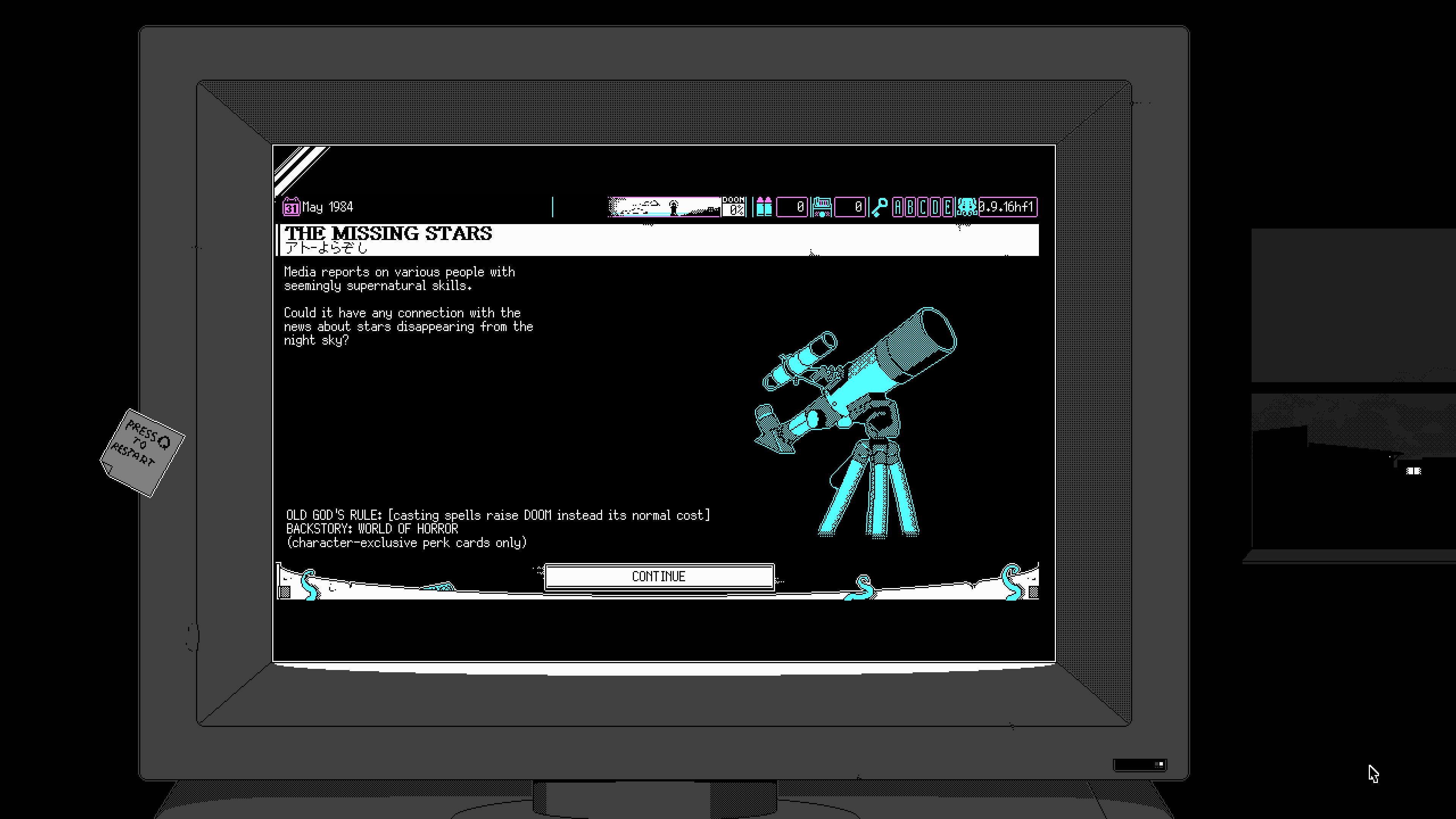
3. ATH-YOLAZSTH: Coming to the "buy a vowel" constituency of the pantheon. You don't see it here, but A-Z is just a towering eyeball - to the point where it dwarfs Earth, as we see in its doom ending. This is a steal from a Junji Ito story about a malevolent living planet, but it gets a pass, because a) Ath-Yo is nothing but an eyeball, which is a stronger image, and b) the real interesting stuff starts after its bad ending, where it hangs around for about 10 years or so before initiating The End. For one, our sky is replaced with a giant eye staring at us, which, yes, I believe would be enough to drive most of us mad. Certainly more effective that the "impossible angles" and geometrical abnormalities Lovecraft invokes. Also, what happens to the tides? Is there an Armageddon-like initiative to land on Ath-Yolazsth and blow it up? How many Tumblr posts are written about how eternal surveillance by an extradimensional hellgod is Not Normal and if venturing outside under its unblinking gaze makes you feel anxious or compromised or drawn to the yawning abyss, you are valid?
Also, isn't the footnote in its intro about the stars disappearing from the sky kinda burying the lede?
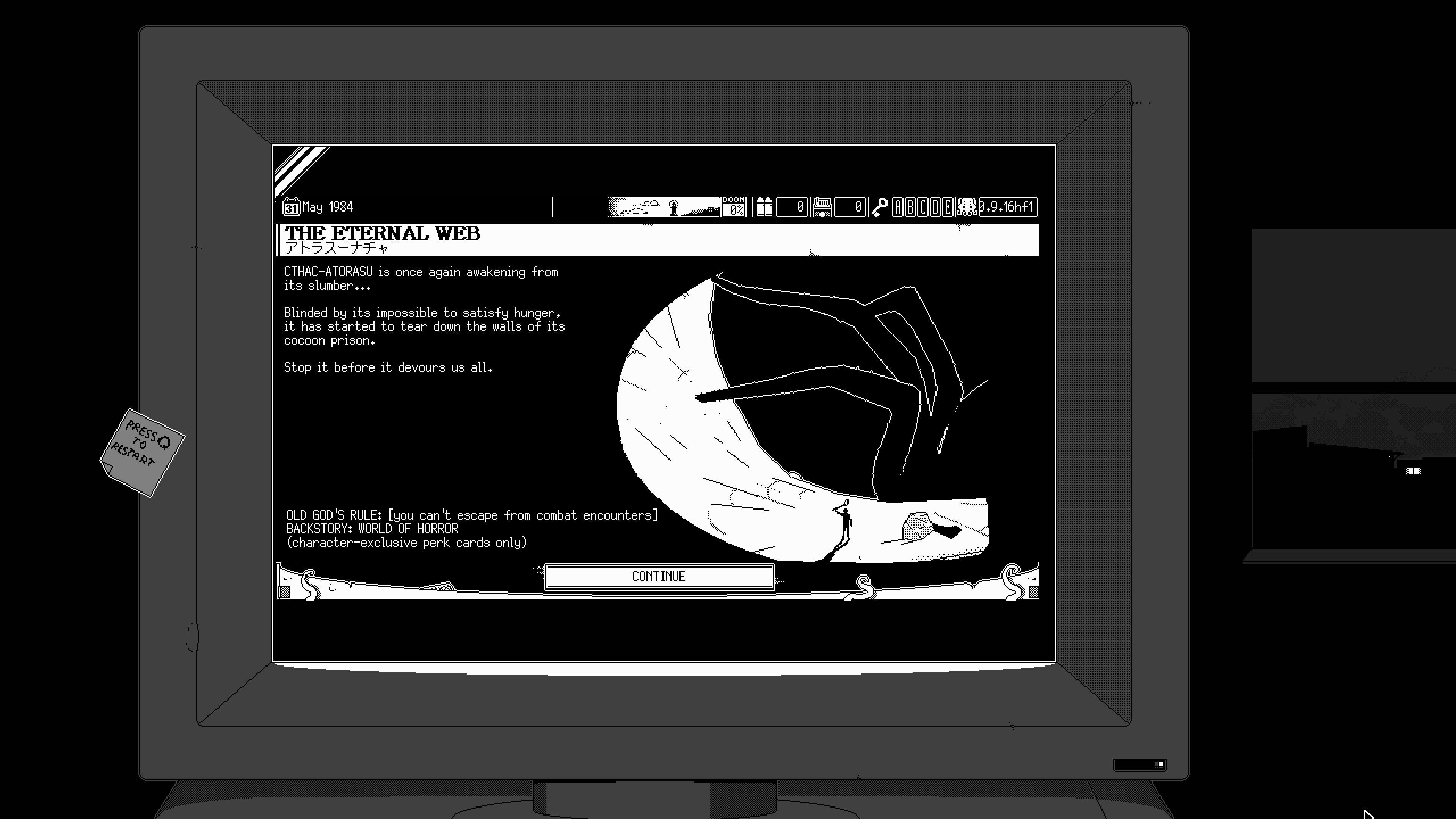
4. CTHAC-ATORASU: It's just a giant spider. Points for the Tolkien reference, but I think humanity could take out a giant spider pretty handily. We wouldn't even need lethal methods: just deploy the Giant Orbiting Glass when it wanders across the Great Plains Tablecloth, then let it out around Neptune. Sole point of intrigue: the katakana rendition of its name reorders its elements, suggesting that Atorasu is a surname. Mr. or Ms. Atorasu. Chtac if you're familiar.
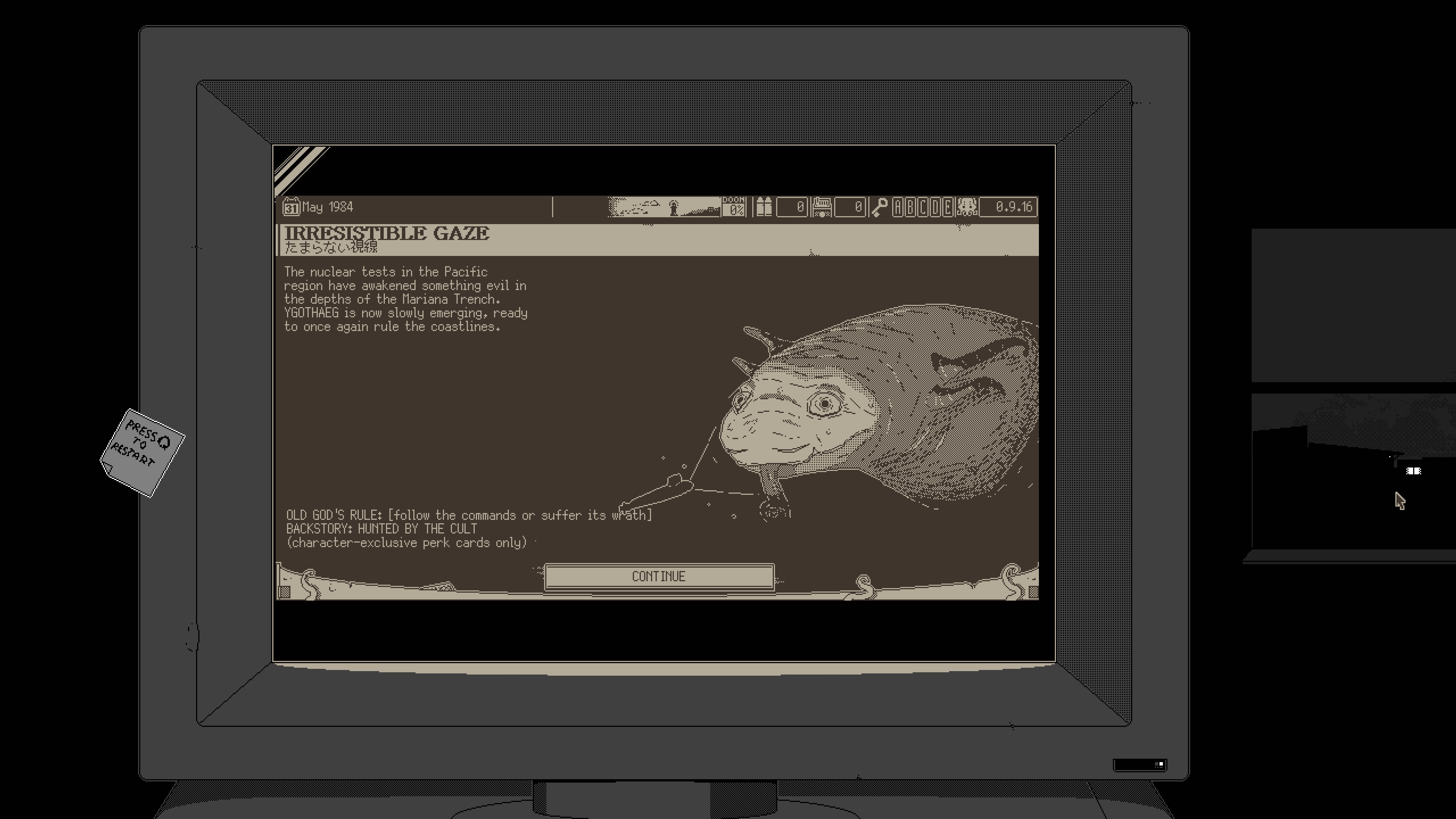
5. YGOTHAEG: It's good to have a sea-based Old One given the Japanese setting, and its doom ending - a hypnotized humanity gathering one night to walk en masse into the sea - is eerie. The problem is that it's a giant axolotl - evolutionary link aside, a singularly unimpressive animal. Furthermore, Ygothaeg's trademark is its maddening gaze, but its axolotl face, dopey in a slothlike mien, has all the menace of a Hanna-Barbera character. (Unfortunately, that face is on screen constantly during a Ygothaeg run, underlining the failure of expectations.) Its gameplay gimmick is that exploring designated locations will earn you extra doom, but you have to explore a certain sequence of locations in order to make progress in World of Horror - there aren't alternate routes save for a single sidequest per case, which doesn't last long enough for Ygothaeg to change fixations - so what am I supposed to do here? The answer is "ignore it," as the extra doom doesn't even make much of a difference in a playthrough. What self-respecting extradimensional abomination is deterred by the cold shoulder?
I bought a Switch a few months ago for Deadly Premonition 2 - a Lite, since the primary model wasn't available. The game didn't work out, but I've been getting into the NES streaming service that comes with the platform's online package. I didn't see it before I got my Lite, but I really understand all the comments now about how the Switch is the way to play those games - having a large, crystal-clear screen in your hands, certain to deliver flawless emulation, with saving available at the touch of a button, is more quality and more convenient than PC emulation. I took the opportunity to revisit a few childhood favorites.

Kid Icarus
The childhood memory: I remember when Erica Rozzi returned my cartridge after borrowing it for the weekend and reported that she and her sister had gotten to Stage 1-3, and I was so frustrated - because for me at the time, 1-2 was as far as it went. I eventually scaled the heights of 1-3, and even went on the beat the game, but those first three stages are burned into my mind as the near the height of "NES hard" - as they have been for many gamers.
Today's experience: I blew through those first three stages like Atalanta through Filene's. (Because Filene's was famous for its wedding-gown sales, and Atalanta disdained marriage, you see.) I can still understand why they have their reputation, 'cause you're climbing up & up on jumping puzzles, with an eternal abyss below you - it's nerve-wracking to negotiate, even without the ever-present threat of instant death. You also have a very small health bar at first, which is a PROBLEM, because enemies pop up from all directions: in front of you, down from above, in homing sine waves around the screen, from the depths below, even underneath your very feet should you tarry. Though I find them a refreshing change of pace, I can see why vertically-oriented platformers didn't catch on - not only do they provide more avenues for attack, but you get a sense of vertigo while playing them.
But I had the dexterity and patience to get Pit onto those platforms this time. Be it through memory, decades of platforming experience since those grade-school attempts, or an adult's motor coordination, it all just clicked for me. Castlevanias have given me more trouble. After that, I had fun mapping my way through the rarely-seen fortress level, and I romped through the remaining stages. And then I did it again to get the best ending. I had as similar experience with Simon's Quest earlier this year, through emulation - it was such a sprawling odyssey when I was a child, and yet my memories and gaming experience allowed my to get through it painlessly in one night and just be a tourist, soaking in the visuals and music and old feelings. These old NES adventure games from my youth fit comfortably into three-hour chunks for an evening's entertainment now that I'm an adult - and I really like that.
It also has a vaporwave aesthetic in its later chapters that I'm surprised hasn't received wider attention.

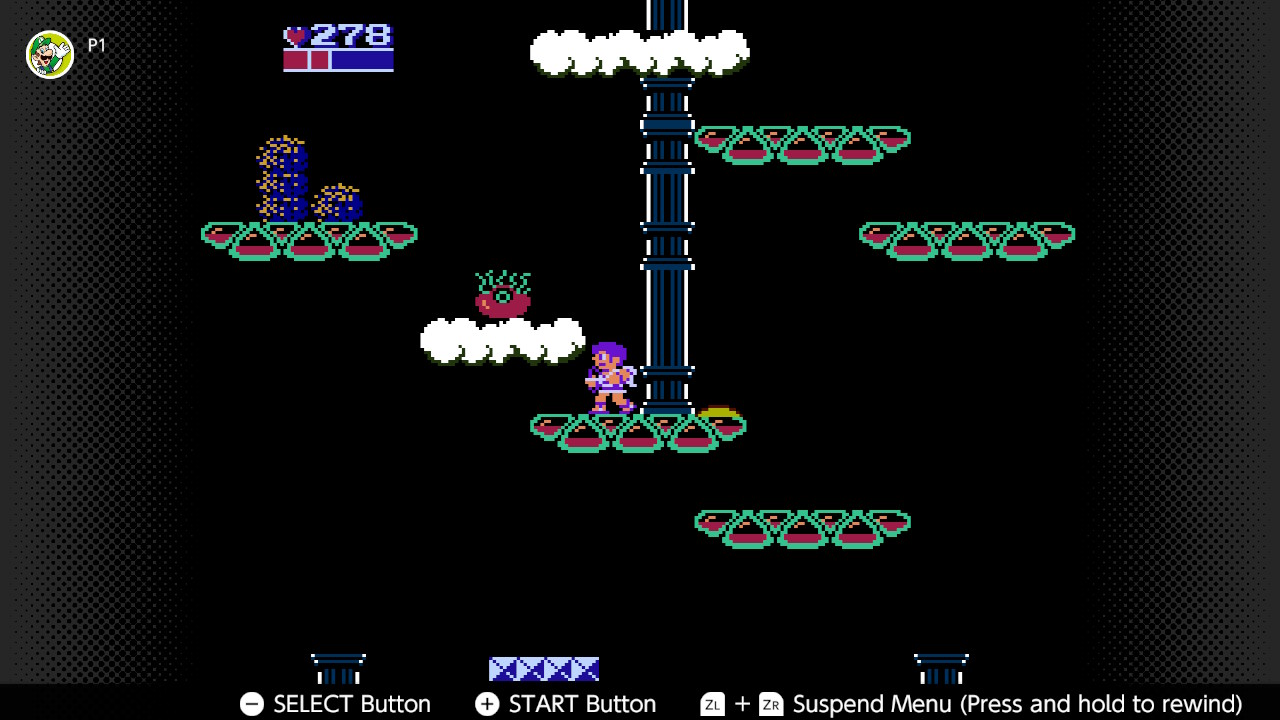
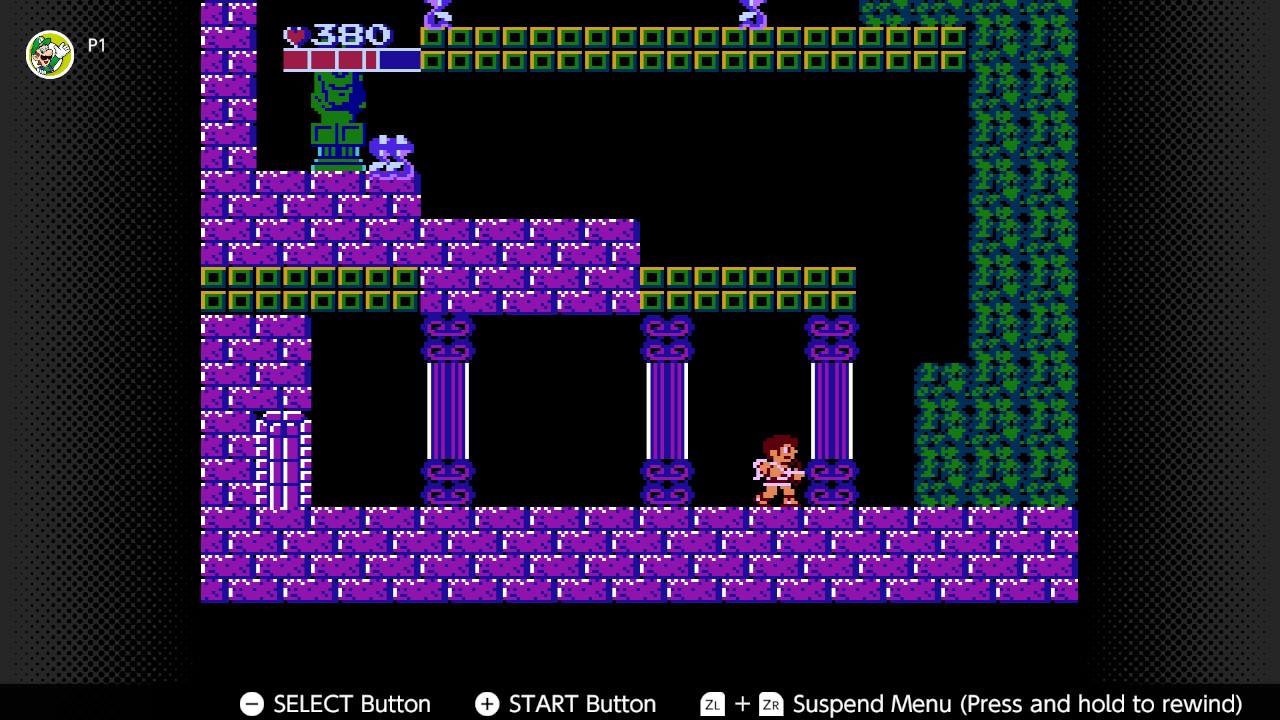
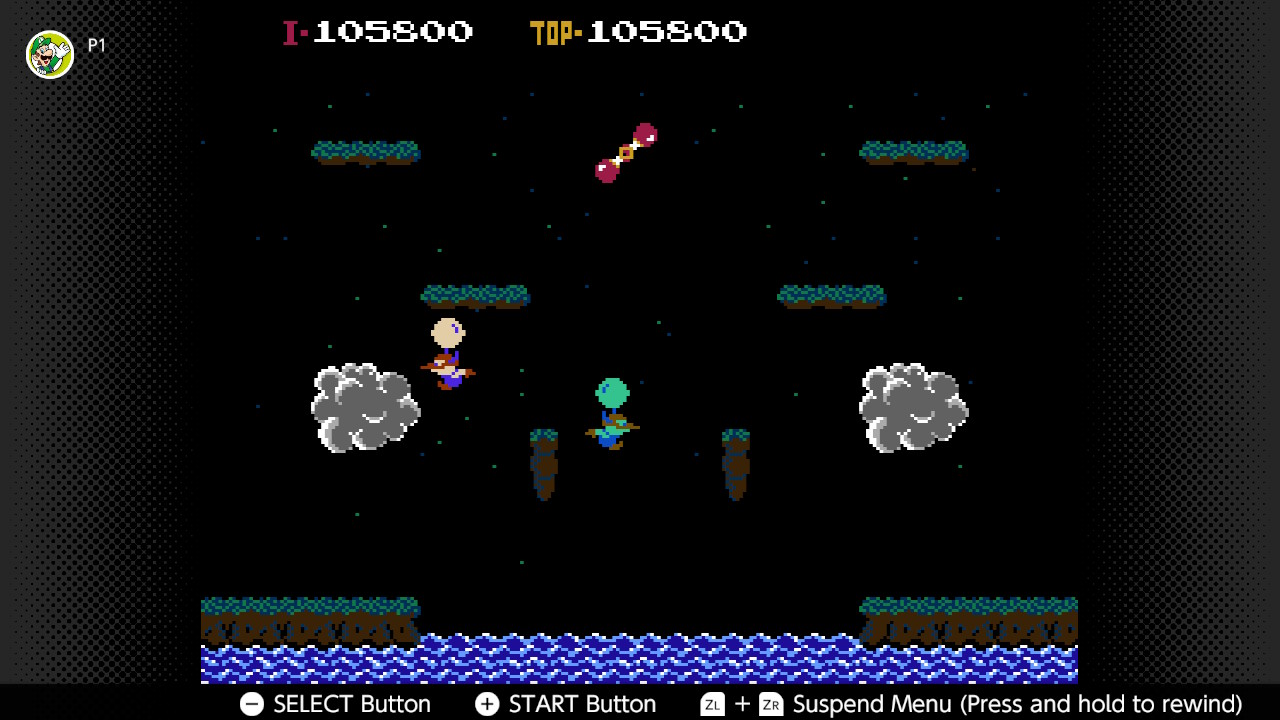
Balloon Fight
The childhood memory: I actually don't have a big special memory of this. I just played it a lot and enjoyed it when I was a kid.
Today's experience: I dabbled with this on a lark, and I came away thinking that this was the first game where being a middle-aged gamer had actually interfered with my ability to play a title. I thought I didn't have the reaction time - and certainly didn't have the interest - to keep pumping the button to keep my little balloonist what I deemed sufficiently afloat, at the top of the screen. I came back to it, though, compelled to give it another chance, and I learned (relearned?) that raw altitude is not, in fact, the best strategy - you have to learn to sail with the surprisingly good physics and maneuver inside your momentum instead of constantly fighting it. Airstream doesn't want you to zoom straight up to face off against that enemy balloonist? You're better off coasting downward and trying another approach. The game demands maneuvering and...finesse that's more complex than you'd expect from the NES. Plus, those sound effects are...poppin'.
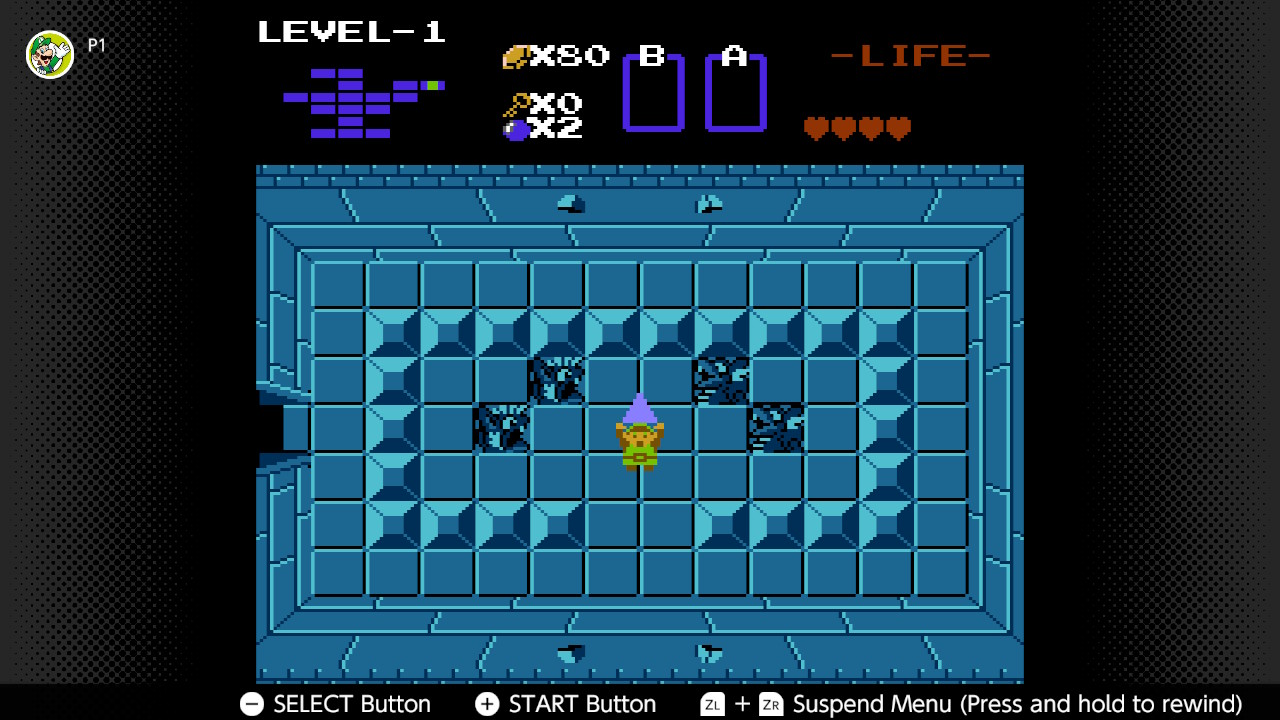
The Legend of Zelda
The childhood memory: Zelda wasn't my first video game, but it might as well have been. It was another world to explore on a cartridge, the title that made me fall in love with games. I spent time in the fields of Hyrule, roving and poking about to see what I could find, like I would spend time in my backyard. It was a continuous element of my life - a full-blown hobby, like soccer or guitar would be for other children. I remember calling up a kid out of the blue who lived in the next state for advice when I was stuck on Darknuts - not anyone I knew; the son of a friend of my mom's manager, who recalled, when the subject of me playing Zelda somehow came up, that he had beaten the game. The boy didn't question my call; he just offered advice immediately. He understood. It was Darknuts. Drastic measures were required.
I wanted to honor that experience but replaying it on my original grade-school cartridge, but the battery was dead, and my NES replacement emits a burning smell when it turns on nowadays.
Today's experience: Initially, this was a real delight. I had forgotten so much in the intervening decades, and making all those discoveries again, and then remembering that, oh, yes, this was where you got that item, or, hey, this was how you got into that dungeon, was a true joy. I blazed through Levels 1 through 8 pretty painlessly, in a single night. Then came Death Mountain and the second quest, and...well, the same elements that played in the game's favor when I had all the time in the world worked against it in my adulthood. You will find treasure if you search every nook and cranny of Zelda's game world - and in many cases, particularly in the second quest, you have to in order to progress. But when you're blazing through the other aspects of the game instead of encountering sufficient difficulty where you have to call up a stranger in Vermont, burning every tree and bombing every wall is busywork. You can waste an entire, fully-expanded bomb supply on a single screen, and the game makes replenishing your supply such a pain. (Let us not speak of burning trees before you get the Magic Candle.) There's very little insight or puzzle-solving involved, save for intuition as to which rock features or trees in certain formations are likely to hold secret caves; it mostly requires just a willingness to kill time that as an adult I found mind-numbing. I began getting outright bored.
I did, eventually, finish the second quest with minimal help. I stumbled across the way to enter Level 6 while reading other players' reactions out of boredom, but I don't think I would have found it otherwise. (In fact, I think that's why I never finished the second quest as a child, as my memories of the game drew a complete blank on anything beyond that point. It's a very me blind spot: "But you use the Whistle to find the secret entrance to Level 7 because it dries up the pond! There's no reason it would reveal anything on a barren screen!") I did find everything else on my own. The second-quest dungeons have their own busywork, though, with the endless bombing of walls (even those on the outer perimeter, as the maps lie) and pushing against walls in case you can pass through them and pushing blocks, as those that trip secret passages are no longer the obvious candidates. My thumb began actually to hurt with all the pushing I was doing. I got to the end, but I can't say it was all or even mostly fun; while getting through the first quest calls for curiosity and inventiveness, getting through the second is near-completely the corner-scouring I by that point hated.
Whereas Kid Icarus and Simon's Quest still delivered fun experiences, just in a different package, I think my latter-day experience with Zelda was one of the first in seeing the childhood magic vanish. It's a milestone for focus and complexity in the medium, I thank it for getting me into video games, and I'm glad I finally triumphed over its final challenge. But I think I'm done with it.
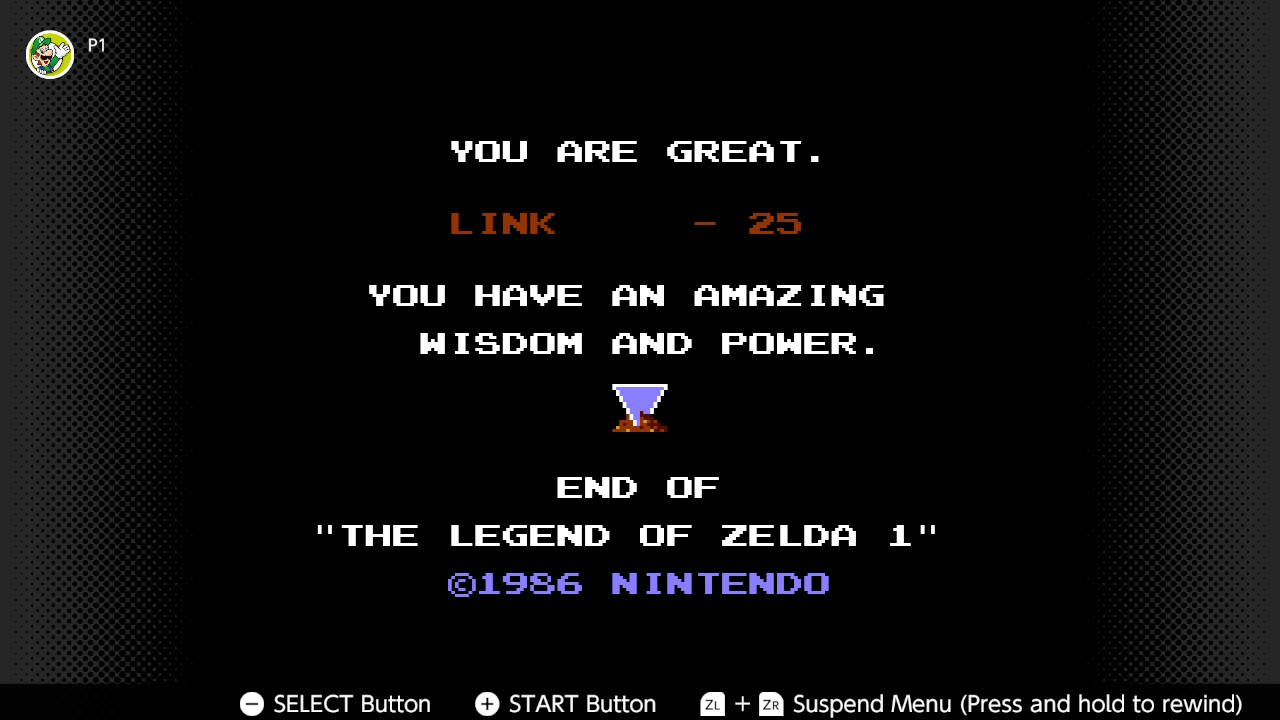
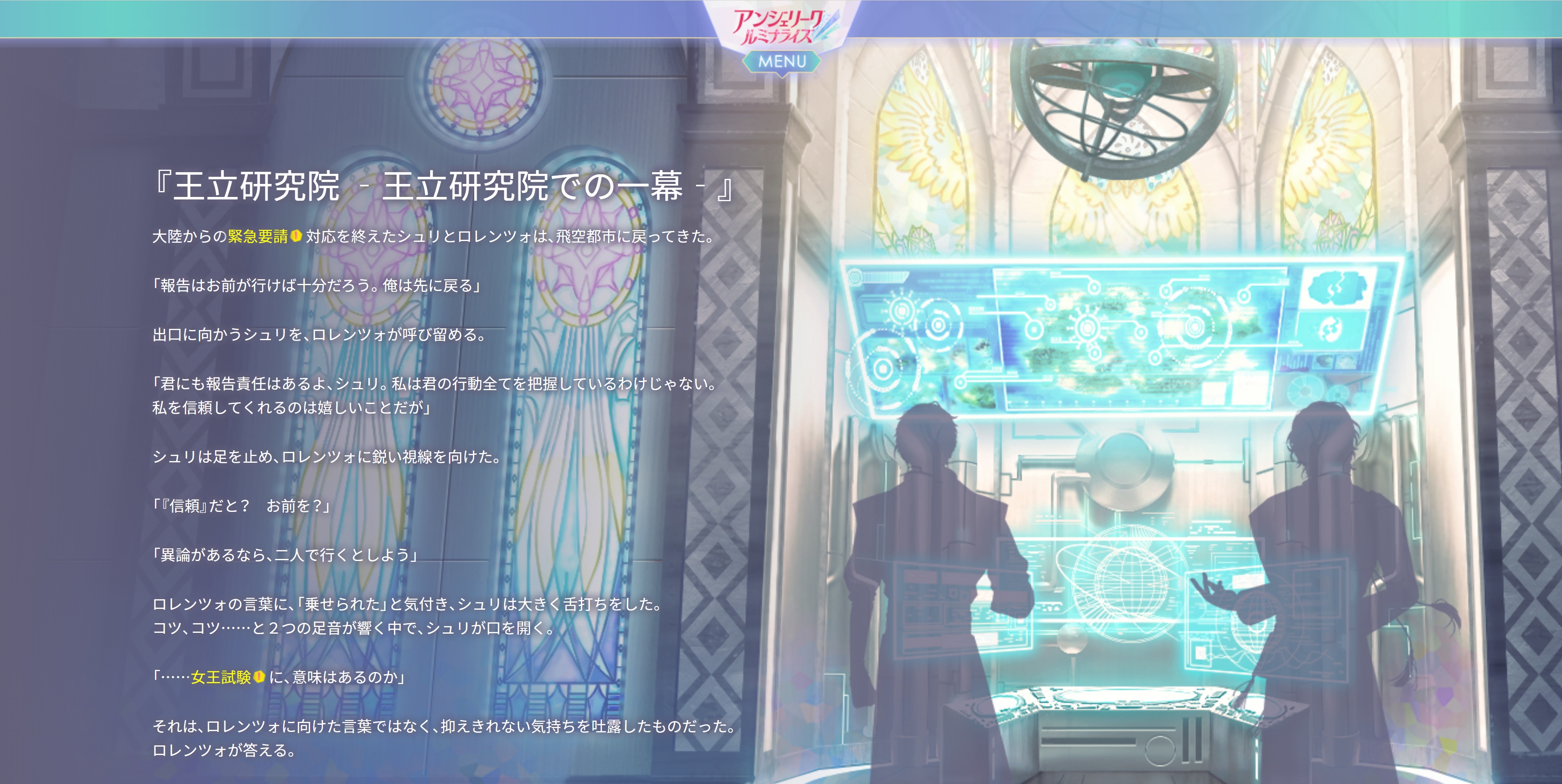
And here we have the second of the very short short stories from the Angelique Luminarise website. Evidently, there are more short stories in B's-LOG - that link to the website stories and are taken from "another perspective." I went the route of importing individual issues of B's-LOG for "special features" a couple times during the lead-up to the Neo Angelique sequel, and it didn't pay off.
Incidentally, the Julious cameo they were teasing is apparently going to take place in a series of three drama CDs they're releasing. Each CD features three of the new Guardians together with their corresponding Divine Bird Guardians. There's also an event coming up with Julious's, Clavis's, Yue's, and Noah's voice actors. More on all that in a bit. These posts take a bit of formatting.
Short story ahoy.
Page 47 of 56
